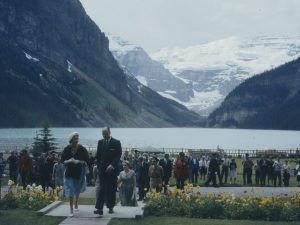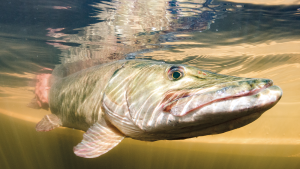
History
The Queen and Canada: A Platinum Jubilee timeline
Noteworthy occasions in a lifetime of service between Queen Elizabeth II and the Commonwealth country she has visited more than any other
- 1168 words
- 5 minutes
This article is over 5 years old and may contain outdated information.
Exploration

Queen of the Lakes was the longest vessel active on the Great Lakes in 1906 when she sprung a massive leak during a late November gale on Lake Ontario. The schooner, built in Portsmouth, Ont. in 1853, was en route to Kingston with more than 400 tonnes of coal, and started to sink fast. Her captain and crew abandoned ship just in time to watch her disappear into the depths; their yawl had only made it about 15 metres from the wreck site when she went under. Queen of the Lakes came to rest at the bottom of Lake Ontario on November 28 with her three masts standing upright and two davits near the ship’s wheel, used to launch the yawl, still slung out over the rail.

More than a century later, in 2009, her wreck was discovered by Dan Scoville, Roland Stevens and Jim Kennard, an electrical engineer by trade and shipwreck enthusiast who has found more than 200 wrecks in the Great Lakes, Lake Champlain, New York’s Finger Lakes, and in the United States’ Mississippi and Ohio Rivers. The team first spotted the stunning view of the entire vessel with a DeepVision side scan SONAR system, and later confirmed the wreck in 2011 with an underwater remote operated vehicle (which took some low resolution black and white images).
On August 30, 2018, I had the opportunity to dive on the undisturbed shipwreck with Teddy Garlock, a paramedic and cave diver I met in a dive shop in Florida. Garlock’s father John was at the helm of our boat and Kennard — a veteran explorer whom Garlock has idolized since he was a teenager — watched the SONAR.
We quickly found the wreck site and dropped directly down onto the old schooner. Since the wreck was well below recreational diving limits, we had to use a helium breathing mix in our rebreather apparatus. When we reached the tip of the ship’s central mast, we saw that the rough structure of the wreck was another 18 metres below us. Descending to the deck, we spotted cables from the sails, a small boiler, a ceramic crock and anchors. She was frozen in time, covered only by a thick layer of quagga mussels.
It is a privilege to have the opportunity to bring back these images, revealing a small piece of Great Lakes history. Photographs from the trip will be donated to the Great Lakes Historical Society, and Jim Kennard will be releasing a book about his discoveries in fall 2018 with the National Museum of the Great Lakes in Toledo, Ohio. Click here for more information and ROV images.








Are you passionate about Canadian geography?
You can support Canadian Geographic in 3 ways:

History
Noteworthy occasions in a lifetime of service between Queen Elizabeth II and the Commonwealth country she has visited more than any other

Environment
How a cocktail of invasive species and global change is altering the Great Lakes-St. Lawrence River ecosystem

Travel
Named after the south star, Octantis is Viking’s first expedition ship, which incorporates visits to Indigenous communities, supports environmental protection and more

Exploration
RCGS Explorer-in-Residence Jill Heinerth discusses the discovery of a Second World War-era bomber 50 metres below the surface in Gander Lake, Newfoundland